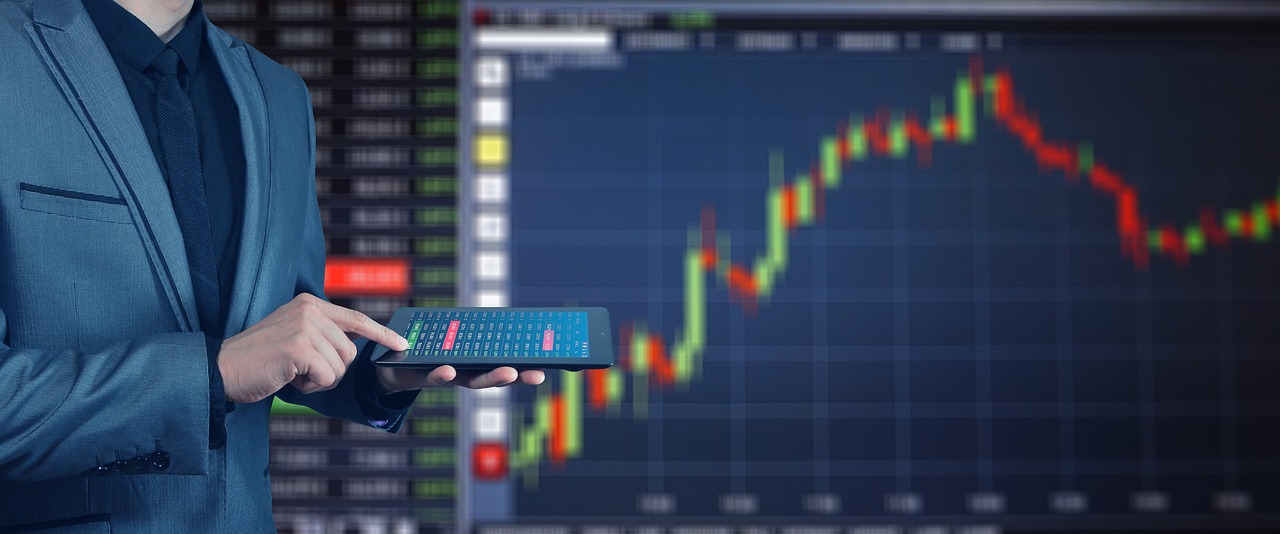How to Analyze Market Indicators for Better Trading Decisions
In the fast-paced world of trading, making informed decisions can feel like navigating through a dense fog. Market indicators serve as your guiding light, illuminating the path to better trading outcomes. They are not just numbers or graphs; they are the heartbeat of the market, revealing trends, shifts, and potential opportunities. By understanding and effectively analyzing these indicators, traders can enhance their strategies and improve their chances of success.
Market indicators are essential tools that provide insights into market trends and conditions. Think of them as the weather forecasts for traders; just as you wouldn’t venture out without checking the weather, you shouldn't make trading decisions without analyzing market indicators. These indicators are typically derived from price movements, trading volumes, and economic data, allowing traders to gauge the overall health of the market. In essence, they offer a snapshot of market sentiment, helping traders to understand whether to buy, sell, or hold their positions.
Market indicators can be broadly categorized into two types: technical indicators and fundamental indicators. Each serves a unique purpose and offers different insights into the market.
Technical indicators focus on price movements and trading volumes. They are like the pulse of the market, providing real-time data that traders can use to make decisions. Some popular technical indicators include:
- Moving Averages: These indicators smooth out price data to identify trends over specific periods.
- Relative Strength Index (RSI): This momentum oscillator measures the speed and change of price movements.
By analyzing these indicators, traders can make educated guesses about future price movements, enhancing their decision-making process.
Moving averages are one of the most commonly used technical indicators. They help traders identify the direction of the trend by filtering out the "noise" from random price fluctuations. There are different types of moving averages:
- Simple Moving Average (SMA): This is calculated by averaging a set number of past prices.
- Exponential Moving Average (EMA): This gives more weight to recent prices, making it more responsive to new information.
Understanding the differences between these types can significantly impact your trading strategy, allowing you to adapt to market conditions more effectively.
The RSI is a powerful momentum oscillator that ranges from 0 to 100. An RSI above 70 indicates that an asset may be overbought, while a reading below 30 suggests it may be oversold. Interpreting these readings can help traders identify potential reversal points in the market. For instance, if the RSI is climbing but the price is not, it may signal that a price correction is imminent.
While technical indicators provide insights based on price data, fundamental indicators assess the economic health of a market. These indicators include key metrics such as:
- Gross Domestic Product (GDP): A measure of economic activity and growth.
- Unemployment Rates: Reflects the health of the labor market.
Understanding these indicators can help traders anticipate market movements based on economic conditions. For example, a rising GDP may indicate a strengthening economy, leading traders to consider buying more assets.
Interpreting market indicators accurately is crucial for effective trading. It’s not just about looking at the numbers; it’s about understanding what they mean in the context of the market. Traders should consider the following guidelines:
- Look for trends rather than isolated data points.
- Combine different indicators for a more comprehensive view.
- Stay updated with market news that could influence indicator readings.
Using multiple indicators can enhance trading decisions. For instance, combining moving averages with the RSI can provide a clearer picture of market momentum. When both indicators align, it can signal a strong trading opportunity. This strategy is akin to having multiple lenses to view the same landscape, allowing for a more detailed and accurate assessment of market conditions.
Traders often make mistakes when analyzing market indicators. Some common pitfalls include:
- Over-relying on a single indicator.
- Ignoring market news that may affect indicator readings.
- Failing to adjust strategies based on changing market conditions.
Avoiding these mistakes can lead to more successful trading outcomes and a deeper understanding of market dynamics.
Real-world examples of how traders apply market indicators in their strategies can be enlightening. For instance, a trader might use moving averages to identify a bullish trend and then confirm this with RSI readings. This approach not only boosts confidence in their trades but also increases the likelihood of making profitable decisions.
Q1: What are market indicators?
Market indicators are tools that provide insights into market trends, helping traders make informed decisions.
Q2: How do I choose the right indicators for my trading strategy?
Consider your trading style and the market conditions. Combining technical and fundamental indicators often yields the best results.
Q3: Can I rely solely on indicators for trading decisions?
While indicators are valuable, it's essential to consider other factors like market news and economic conditions.
Q4: How often should I check market indicators?
It depends on your trading strategy. Day traders may check them frequently, while long-term investors might look at them less often.

Understanding Market Indicators
Market indicators are the compass for traders navigating the often turbulent waters of financial markets. They are essential tools that provide insights into market trends and conditions, acting as a bridge between raw data and informed trading decisions. But what exactly are market indicators? In simple terms, they are statistical measures that help traders understand the overall market sentiment and forecast future price movements. Without these indicators, trading can feel like sailing a ship without a map—uncertain and risky.
These indicators can be broadly classified into two categories: technical indicators and fundamental indicators. Technical indicators focus on price movements and trading volumes, allowing traders to analyze past market behavior to predict future trends. On the other hand, fundamental indicators assess the economic health of a market, considering factors like economic data, news events, and overall market conditions. By understanding both types, traders can develop a more holistic view of the market.
To put it simply, think of market indicators as the vital signs of the market. Just as a doctor checks blood pressure and heart rate to assess a patient's health, traders use these indicators to gauge the market's vitality. For instance, if a trader notices a rising trend in the Relative Strength Index (RSI), it may indicate that the market is gaining momentum, prompting them to consider buying. Conversely, a declining trend in unemployment rates could signal a strengthening economy, suggesting that it might be a good time to invest.
In essence, understanding market indicators is about connecting the dots. By piecing together the information provided by various indicators, traders can make educated guesses about where the market is heading. However, it's crucial to remember that while indicators can provide valuable insights, they are not foolproof. Markets can be unpredictable, and external factors can sway trends in unexpected ways. Therefore, a well-rounded approach that combines both technical and fundamental indicators often yields the best results.
Overall, mastering market indicators is not just about knowing what they are; it's about understanding their significance and applying them effectively in trading strategies. By doing so, traders can enhance their decision-making process, minimize risks, and ultimately improve their chances of success in the market.

Types of Market Indicators
When it comes to trading, understanding the is crucial for making informed decisions. Market indicators can be broadly categorized into two main types: technical indicators and fundamental indicators. Each type serves a unique purpose and provides different insights into market behavior, helping traders to navigate the often tumultuous waters of trading.
Technical indicators focus primarily on price movements and trading volumes. They are like the weather forecast for traders, helping them predict future price movements based on historical data. For instance, traders often rely on indicators such as Moving Averages and the Relative Strength Index (RSI). These tools can help traders to identify trends, gauge market momentum, and make decisions based on statistical analysis rather than mere intuition.
On the other hand, fundamental indicators assess the overall economic health of a market. They are more like the economic compass guiding traders through the broader landscape of market conditions. Key indicators in this category include metrics such as Gross Domestic Product (GDP), unemployment rates, and interest rates. These indicators provide insights into the economic environment, helping traders understand how external factors might affect market performance.
To give you a clearer picture, here’s a
| Type of Indicator | Description | Examples |
|---|---|---|
| Technical Indicators | Analyze price movements and trading volumes to forecast future price trends. | Moving Averages, RSI, MACD |
| Fundamental Indicators | Assess the economic health and performance of a market. | GDP, Unemployment Rates, Inflation Rates |
Understanding these types of indicators is vital for any trader looking to enhance their trading strategies. By leveraging both technical and fundamental indicators, traders can develop a more comprehensive view of the market, allowing them to make better-informed decisions. So, whether you're a novice or an experienced trader, recognizing the significance of these indicators can set you on the path to trading success.

Technical Indicators
When it comes to trading, understanding can be your secret weapon. These indicators are like a compass, guiding traders through the often turbulent waters of the financial markets. They provide insights into price movements and trading volumes, helping traders make informed decisions. Think of them as the pulse of the market, revealing trends and potential reversals. But what exactly are these indicators, and how can they assist you in your trading journey?
Technical indicators can be categorized into various types, each serving a unique purpose. The most common ones include Moving Averages and the Relative Strength Index (RSI). Let's dive deeper into these two popular indicators and explore how they can enhance your trading strategies.
Moving averages are one of the most widely used technical indicators in trading. They work by smoothing out price data over a specific period, allowing traders to identify the underlying trend. Imagine you're looking at a graph of a roller coaster; the moving average flattens the peaks and valleys, giving you a clearer picture of the ride's overall direction.
There are different types of moving averages, including:
- Simple Moving Average (SMA): This is the average price over a set period. For example, a 10-day SMA adds up the closing prices of the last 10 days and divides by 10.
- Exponential Moving Average (EMA): This type gives more weight to recent prices, making it more responsive to new information. Traders often prefer the EMA for its sensitivity to price changes.
Using moving averages in your trading strategy can help you identify potential entry and exit points. For instance, when the short-term moving average crosses above the long-term moving average, it may signal a buying opportunity, while the opposite could indicate a selling opportunity.
The Relative Strength Index (RSI) is another crucial technical indicator, often referred to as a momentum oscillator. It measures the speed and change of price movements on a scale from 0 to 100. Think of the RSI as a speedometer for your trades; it tells you how fast prices are moving and whether they are overbought or oversold.
Typically, an RSI reading above 70 indicates that an asset may be overbought, while a reading below 30 suggests it may be oversold. This information can be invaluable for traders looking to time their entries and exits. For example, if the RSI hits 75, it might be a signal to consider selling, while a dip to 25 could indicate a potential buying opportunity.
To summarize, technical indicators like moving averages and RSI are essential tools for traders. They help in analyzing market trends and making educated decisions. By incorporating these indicators into your trading strategy, you can enhance your ability to navigate the complexities of the financial markets.
In the next section, we will explore how to interpret these indicators effectively and combine them for even better insights.
- What are technical indicators? Technical indicators are mathematical calculations based on the price, volume, or open interest of a security. They help traders analyze market trends and make informed trading decisions.
- How do I use moving averages in trading? Moving averages can help identify trends. Traders often look for crossovers between short-term and long-term moving averages to signal potential buy or sell opportunities.
- What does an RSI reading of 50 mean? An RSI reading of 50 suggests that the market is neither overbought nor oversold, indicating a neutral trend.

Moving Averages
Moving averages are like the compass of a trader’s journey through the often turbulent seas of the financial markets. They help traders smooth out price data over specific periods, allowing them to identify trends more clearly. Imagine trying to navigate a stormy ocean without a map; that’s how challenging trading can be without the guidance of moving averages. By averaging the price over a set number of days, traders can filter out the noise of daily fluctuations and focus on the underlying trend.
There are several types of moving averages, each with its unique characteristics and applications. The most common types include:
- Simple Moving Average (SMA): This is the most straightforward type, calculated by adding the closing prices over a specified period and dividing by the number of periods. For instance, a 10-day SMA takes the closing prices of the last ten days, sums them up, and divides by ten. This gives traders a clear view of the average price over that time frame.
- Exponential Moving Average (EMA): Unlike the SMA, the EMA gives more weight to recent prices, making it more responsive to new information. This can be particularly useful in fast-moving markets where timely decisions are crucial.
- Weighted Moving Average (WMA): The WMA also assigns different weights to prices, but it does so in a linear fashion. This means that the most recent prices have the most significant impact on the average, but not as heavily as in the EMA.
Understanding how to use these moving averages effectively can significantly enhance trading strategies. For example, traders often look for crossovers between different moving averages as signals for buying or selling. When a shorter-term moving average crosses above a longer-term moving average, it can indicate a potential uptrend, while the opposite crossover might signal a downtrend.
Moreover, moving averages can also act as dynamic support and resistance levels. When the price approaches a moving average, it may bounce off it, indicating a potential reversal. This is particularly true for the 50-day and 200-day moving averages, which are widely watched by traders across the globe.
To illustrate the effectiveness of moving averages, let’s take a look at a simple table comparing the SMA and EMA for a hypothetical stock over a week:
| Day | Closing Price | SMA (5-day) | EMA (5-day) |
|---|---|---|---|
| 1 | $20 | - | - |
| 2 | $22 | - | - |
| 3 | $21 | - | - |
| 4 | $23 | - | - |
| 5 | $24 | $22 ($20+22+21+23+24)/5 | $22.4 (calculated using the EMA formula) |
As seen in the table, moving averages not only help in identifying trends but also in smoothing out price fluctuations, making it easier for traders to make informed decisions. In summary, moving averages are a crucial tool in any trader's toolkit. They provide clarity amidst chaos and can significantly improve the accuracy of trading strategies. So, the next time you find yourself lost in the market's noise, remember to consult your moving averages—they might just steer you in the right direction!
Q1: What is the main difference between SMA and EMA?
A1: The main difference lies in how they calculate the average. SMA gives equal weight to all prices in the period, while EMA gives more weight to recent prices, making it more responsive to new information.
Q2: How can I determine which moving average to use?
A2: The choice between SMA and EMA depends on your trading strategy. If you prefer a smoother average and are less concerned with immediate price changes, SMA may be suitable. Conversely, if you need to react quickly to market movements, EMA is likely the better option.
Q3: Can moving averages be used in all types of markets?
A3: Yes, moving averages can be applied in various markets, including stocks, forex, and commodities. However, their effectiveness can vary depending on market conditions and volatility.

Relative Strength Index (RSI)
The is a powerful momentum oscillator that plays a crucial role in the toolkit of many traders. It measures the speed and change of price movements, providing insights into whether a market is overbought or oversold. Think of the RSI as your market temperature gauge; it helps you determine if the market is heating up or cooling down, which can be vital for making timely trading decisions.
Typically, the RSI is calculated using a scale from 0 to 100, with readings above 70 indicating that an asset may be overbought and readings below 30 suggesting it may be oversold. This information can be pivotal when deciding whether to enter or exit a trade. For instance, if the RSI is above 70, it might signal to a trader that the price has risen too quickly and could be due for a pullback. Conversely, an RSI below 30 might indicate a potential buying opportunity, as the price could rebound after a significant drop.
Understanding how to interpret RSI readings involves more than just looking at the numbers. Traders often look for divergences between the RSI and the price action. For example, if the price of an asset is making new highs while the RSI is failing to reach new highs, this divergence could indicate a potential reversal. It’s like a warning sign, alerting you that the market might be losing momentum.
To make the most of the RSI, traders often combine it with other indicators. For example, they might look at moving averages alongside the RSI to confirm trends. This combination can provide a more comprehensive view of market conditions and help in making informed decisions. Here’s a simple table illustrating how different RSI levels can guide trading decisions:
| RSI Level | Market Condition | Trading Action |
|---|---|---|
| Above 70 | Overbought | Consider selling or taking profits |
| 30 to 70 | Neutral | Wait for further confirmation |
| Below 30 | Oversold | Consider buying or entering a long position |
In summary, the RSI is a versatile tool that can greatly enhance your trading strategy. By understanding its readings and combining it with other indicators, you can make more informed decisions and potentially increase your trading success. Just remember, while the RSI is a valuable resource, it’s not infallible; always consider the broader market context and use it as part of a comprehensive trading strategy.
- What is the best RSI setting for trading? - While the standard setting is 14 periods, some traders prefer to adjust it based on their trading style and the asset being analyzed.
- Can the RSI be used in all markets? - Yes, the RSI can be applied to stocks, forex, commodities, and cryptocurrencies, making it a versatile indicator.
- How often should I check the RSI? - It depends on your trading strategy; day traders may check it frequently, while swing traders might look at it less often.

Fundamental Indicators
Fundamental indicators are the backbone of economic analysis. They provide traders with a comprehensive understanding of the economic landscape by assessing various factors that influence market performance. These indicators are crucial for anyone looking to make informed trading decisions, as they reflect the overall health of an economy. By analyzing these indicators, traders can gauge whether a market is bullish or bearish, which can significantly impact their trading strategies.
One of the primary fundamental indicators is the Gross Domestic Product (GDP). GDP measures the total value of all goods and services produced over a specific time period, providing a snapshot of a country's economic performance. A rising GDP often signals economic growth, which can lead to increased consumer spending and investment. Conversely, a declining GDP might indicate economic trouble, prompting traders to reassess their positions. Understanding GDP trends can help traders anticipate market movements and adjust their strategies accordingly.
Another key indicator is the unemployment rate. This metric reflects the percentage of the labor force that is unemployed and actively seeking employment. A low unemployment rate typically suggests a strong economy, where businesses are thriving and hiring. However, if the unemployment rate rises sharply, it can signal economic distress, leading traders to be cautious. The relationship between unemployment and market performance is complex, and savvy traders keep a close eye on this indicator to inform their decisions.
Additionally, inflation rates play a significant role in economic health. Inflation measures the rate at which the general level of prices for goods and services rises, eroding purchasing power. Moderate inflation can indicate a growing economy, but high inflation can lead to uncertainty and decreased consumer confidence. Traders must assess inflation data, such as the Consumer Price Index (CPI), to understand its potential impact on market trends and adjust their strategies accordingly.
Other fundamental indicators include interest rates, consumer confidence indices, and manufacturing output. Each of these indicators provides unique insights into market conditions. For example, interest rates set by central banks can influence borrowing costs and consumer spending, while consumer confidence indices reflect how optimistic consumers are about the economy. Understanding these indicators in conjunction with one another can provide traders with a more nuanced view of market dynamics.
In summary, fundamental indicators are essential for traders aiming to enhance their market analysis. By closely monitoring economic indicators such as GDP, unemployment rates, and inflation, traders can make more informed decisions that align with market conditions. The key is to interpret these indicators in the context of broader market trends and to remain flexible in their trading strategies.

Interpreting Market Indicators
Interpreting market indicators accurately is crucial for effective trading. Just like a navigator relies on stars to find their way through the night, traders depend on these indicators to guide their decisions. However, it's not just about having the tools; it's about knowing how to use them wisely. Understanding what each indicator signifies and how they interact with one another can make the difference between a successful trade and a costly mistake.
When analyzing market indicators, it’s essential to consider the context in which they are used. For instance, a rising Relative Strength Index (RSI) might indicate that a stock is becoming overbought, but if the overall market sentiment is bullish, it might still continue to rise. This interplay between different indicators can provide deeper insights into market dynamics. Therefore, traders should always look for confluence between multiple indicators to strengthen their trading decisions.
Moreover, the timing of interpreting these indicators is equally important. Market conditions can change rapidly—what was a reliable indicator yesterday might not hold the same weight today. For example, during periods of high volatility, traditional indicators may give false signals. Traders should stay agile, adjusting their analyses based on current conditions rather than relying solely on historical data.
To help you navigate the complex world of market indicators, here are some key points to consider:
- Understand the Indicator: Know what each indicator measures and its limitations. For example, while moving averages can indicate trends, they lag behind price movements.
- Look for Divergence: When price action diverges from an indicator, it can signal potential reversals. For instance, if prices are climbing but the RSI is falling, it might suggest a weakening trend.
- Combine Indicators: Use a mix of technical and fundamental indicators to get a holistic view of market conditions. This combination can enhance your understanding and lead to better trading outcomes.
By keeping these principles in mind, traders can develop a more nuanced approach to interpreting market indicators. It’s like piecing together a puzzle; each indicator provides a piece of the bigger picture. When you fit those pieces together correctly, you can see trends and shifts in the market that others might miss.
In conclusion, interpreting market indicators is an art as much as it is a science. It requires practice, patience, and a willingness to learn from both successes and failures. As you continue to refine your skills in analyzing these indicators, you’ll find that your trading decisions become sharper, more informed, and ultimately more profitable.
Q1: What are market indicators?
A1: Market indicators are tools that help traders assess market conditions, trends, and potential price movements. They can be technical, such as moving averages, or fundamental, like GDP data.
Q2: How can I combine different indicators effectively?
A2: Combining indicators involves using multiple tools to confirm trading signals. For example, a trader might use a moving average crossover along with RSI to validate a buy or sell decision.
Q3: Are there common mistakes traders make with indicators?
A3: Yes, common mistakes include relying too heavily on one indicator, ignoring market context, and failing to adjust strategies based on changing conditions.

Combining Indicators for Better Insights
When it comes to trading, relying on a single market indicator can be like trying to navigate a ship through fog with only a flashlight. You might see a little bit ahead, but you miss the bigger picture. Combining indicators can illuminate your trading path, providing a more comprehensive view of market dynamics. By integrating multiple indicators, traders can cross-verify signals, enhancing the reliability of their trading decisions.
For instance, consider using a combination of moving averages and the Relative Strength Index (RSI). Moving averages help identify the overall trend by smoothing out price fluctuations, while the RSI can indicate whether an asset is overbought or oversold. When both indicators align—for example, when the price crosses above the moving average while the RSI is below 30 (indicating oversold conditions)—it can signal a potential buying opportunity.
Moreover, combining indicators can help mitigate the risks associated with false signals. Each indicator has its strengths and weaknesses, and by using them together, you can create a more robust trading strategy. Here are some common combinations that traders find effective:
- MACD and RSI: The Moving Average Convergence Divergence (MACD) can show momentum, while the RSI can confirm whether that momentum is sustainable.
- Bollinger Bands and Moving Averages: Bollinger Bands can indicate volatility, and when combined with moving averages, they can help traders identify entry and exit points more effectively.
- Volume and Price Action: Analyzing volume alongside price movements can reveal the strength of a trend, providing deeper insights into market behavior.
It's essential to remember that while combining indicators can enhance your analytical capabilities, overcomplicating your strategy can lead to confusion. Aim for a balance where you have enough data to make informed decisions without overwhelming yourself with too many indicators. A streamlined approach often yields better results.
As you develop your trading strategy, backtesting your combined indicators on historical data can also provide insights into their effectiveness. This process allows you to see how well your chosen indicators would have performed in various market conditions, giving you confidence in your trading decisions.
In conclusion, the art of combining market indicators lies in finding the right mix that suits your trading style and objectives. By integrating various tools, you can enhance your market analysis, make more informed decisions, and ultimately improve your trading performance.
Q1: Can I use any indicators together?
A1: While you can technically combine any indicators, it's best to choose those that complement each other and provide different perspectives on market conditions.
Q2: How many indicators should I use?
A2: It's recommended to use 2-3 indicators to avoid analysis paralysis. This allows for a balanced approach without overwhelming complexity.
Q3: How do I know if my indicators are effective?
A3: Backtesting your indicators on historical data can help you determine their effectiveness and refine your strategy accordingly.

Common Mistakes in Indicator Analysis
When diving into the world of trading, many traders often find themselves overwhelmed by the plethora of market indicators available. It's easy to get lost in the numbers and graphs, but making mistakes in indicator analysis can lead to poor trading decisions and significant losses. One of the most common pitfalls is over-reliance on a single indicator. While it might be tempting to trust one tool that seems to work well, it's crucial to remember that no single indicator can provide a complete picture of the market. Relying solely on one could lead you to miss out on vital information that other indicators might reveal.
Another frequent mistake is ignoring the context in which indicators are being used. For instance, a moving average might indicate a bullish trend, but if significant news is about to be released, the market could react unpredictably. Traders need to consider the broader economic landscape and not just the signals from their indicators. This is akin to navigating through a storm; you can't just rely on your compass; you also need to be aware of the weather conditions.
Additionally, many traders fall into the trap of chasing trends. They see an indicator signaling a strong upward movement and jump in without doing their homework. This can often lead to buying at the peak, only to watch their investments plummet shortly after. It's essential to analyze the trend, understand its sustainability, and evaluate whether the market conditions support it. Patience is key; sometimes, waiting for the right moment can save you from unnecessary losses.
Moreover, a lack of backtesting can be detrimental. Many traders fail to test their strategies against historical data before implementing them in live trading. Backtesting allows traders to see how their indicators would have performed in different market conditions, providing valuable insights and helping to refine their strategies. Without it, traders are essentially flying blind, hoping for the best without understanding the risks involved.
Finally, not maintaining a trading journal is a mistake that many traders overlook. By documenting trades, including the indicators used and the outcomes, traders can identify patterns in their decision-making processes. This reflection allows for continuous improvement and helps in recognizing which indicators work best under specific conditions. A trading journal is like a mirror, reflecting your trading habits and helping you adjust your strategies for better outcomes.
In summary, while market indicators are powerful tools for traders, they are not foolproof. By avoiding these common mistakes—over-reliance on a single indicator, ignoring context, chasing trends, neglecting backtesting, and failing to keep a trading journal—traders can make more informed decisions and enhance their trading performance. Remember, trading is as much an art as it is a science, and understanding the nuances of indicator analysis is key to mastering it.
- What is the most common mistake traders make with indicators?
Over-reliance on a single indicator without considering other market factors is one of the most common mistakes. - How can I avoid chasing trends?
Analyze the sustainability of the trend and wait for confirmations before entering a trade. - Why is backtesting important?
Backtesting helps traders understand how their strategies would have performed historically, allowing for better decision-making. - What should I include in my trading journal?
Document your trades, indicators used, market conditions, and outcomes to identify patterns and improve your strategies.

Practical Applications of Market Indicators
When it comes to trading, understanding the practical applications of market indicators can be the difference between success and failure. Market indicators are not just abstract concepts; they are powerful tools that traders can use to make informed decisions. By analyzing these indicators, traders can gain insights into market trends, identify potential entry and exit points, and ultimately enhance their trading strategies. Let's dive into some real-world examples that illustrate how these indicators can be applied effectively.
Consider the case of a forex trader who relies heavily on technical indicators to guide their trading decisions. This trader uses the Moving Average Convergence Divergence (MACD) indicator to identify potential buy and sell signals. By observing the MACD line crossing above the signal line, the trader interprets this as a bullish signal, prompting them to enter a long position. Conversely, when the MACD line crosses below the signal line, it signals a bearish trend, and the trader might choose to exit their position or go short. This simple yet effective approach allows the trader to capitalize on market momentum.
Another excellent example can be found in the stock market, where fundamental indicators play a pivotal role. For instance, a trader might analyze the Gross Domestic Product (GDP) growth rate of a country before making investment decisions in its stock market. If the GDP is showing consistent growth, it often indicates a healthy economy, which can lead to increased corporate profits and higher stock prices. The trader may then decide to invest in stocks of companies that are expected to benefit from this economic growth. On the other hand, if the GDP is declining, the trader might opt to stay away from the market or even short-sell stocks, anticipating a downturn.
Moreover, combining different indicators can yield even greater insights. For example, a trader might use both the Relative Strength Index (RSI) and moving averages together. The RSI can help determine whether a stock is overbought or oversold, while moving averages can indicate the overall trend direction. If the RSI shows that a stock is oversold and the price is above its moving average, it could signal a potential buying opportunity. This multi-faceted approach can significantly improve the accuracy of trading decisions.
However, it’s essential to remember that market indicators are not foolproof. They should be used as part of a broader trading strategy that includes risk management and market research. Traders often learn from their experiences, adapting their strategies based on what works and what doesn’t. For instance, a trader might find that certain indicators work better in specific market conditions, such as trending vs. ranging markets. By analyzing past trades and outcomes, they can refine their approach, making adjustments to their use of market indicators.
In summary, the practical applications of market indicators are vast and varied. Whether you are a seasoned trader or just starting, understanding how to apply these indicators can significantly impact your trading success. By combining technical and fundamental indicators and adjusting your strategies based on market conditions, you can develop a more robust trading plan that enhances your decision-making process.
- What are market indicators? Market indicators are tools used to analyze market trends and conditions, helping traders make informed decisions.
- How can I use technical indicators in trading? Technical indicators can help identify price trends and potential buy/sell signals based on historical data.
- What is the importance of fundamental indicators? Fundamental indicators assess the economic health of a market, influencing long-term trading decisions.
- Can I rely solely on indicators for trading decisions? While indicators are helpful, they should be part of a broader strategy that includes risk management and market analysis.
Frequently Asked Questions
- What are market indicators?
Market indicators are tools that help traders understand market trends and conditions. They provide valuable insights into price movements and trading volumes, allowing traders to make informed decisions based on data rather than speculation.
- What are the main types of market indicators?
There are two primary types of market indicators: technical indicators and fundamental indicators. Technical indicators focus on price movements and trading volumes, while fundamental indicators assess the overall economic health of a market.
- How do technical indicators assist in trading?
Technical indicators, like moving averages and the Relative Strength Index (RSI), help traders identify trends and potential entry or exit points. By analyzing price data, traders can make decisions based on historical patterns and momentum.
- What is a moving average and why is it important?
A moving average smooths out price data to help traders identify trends over specific time periods. It is important because it reduces market noise, allowing traders to see the underlying trend more clearly and make better trading decisions.
- How do I interpret the Relative Strength Index (RSI)?
The RSI measures the speed and change of price movements. An RSI above 70 indicates that an asset may be overbought, while an RSI below 30 suggests it may be oversold. Understanding these signals can help traders determine potential reversal points.
- What are fundamental indicators and how do they impact trading?
Fundamental indicators, such as GDP and unemployment rates, evaluate the economic health of a market. These indicators can significantly impact market trends and trader sentiment, influencing decisions on when to buy or sell assets.
- How can I combine different indicators for better trading insights?
Combining multiple indicators can provide a more comprehensive view of market conditions. For example, using both technical and fundamental indicators together can enhance prediction accuracy and help traders make more informed decisions.
- What are common mistakes when analyzing market indicators?
Common mistakes include relying too heavily on a single indicator, ignoring market context, and not adjusting strategies based on changing market conditions. Avoiding these pitfalls can lead to more successful trading outcomes.
- Can you provide examples of practical applications of market indicators?
Absolutely! Many traders use market indicators to develop strategies based on historical data. For example, a trader might use moving averages to identify long-term trends and combine them with RSI readings to time their entries and exits effectively.



















